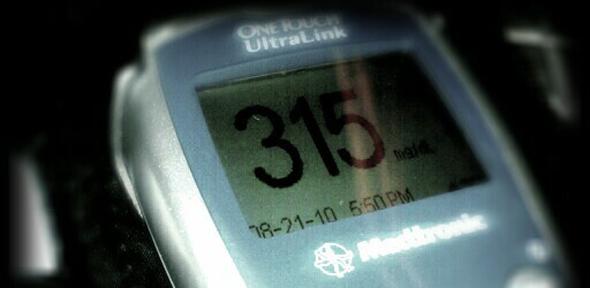
Type 1 diabetes, the disease that I mainly focus on, is relatively common in the UK – around one in 300 people in the UK alone are affected by it and face multiple daily insulin injections. So one might imagine we would have no problem recruiting patients for the trial of an exciting potential new treatment that could mean an end to those injections in the future.
As you may know already, type 1 diabetes is an autoimmune disease – the immune system mistakes cells in the pancreas as harmful and attacks them. When these cells are damaged the pancreas is unable to produce enough insulin, which plays an essential role in transferring glucose out of the bloodstream and into cells to be converted into energy. This is why patients have to regularly inject themselves with insulin to compensate.
Type 1 diabetes is a genetically complex disease – there is no single gene that causes it, but rather dozens of genes that increase the risk of developing the disease. But we do know of one particular set of genes – interleukin-2, or IL-2 – which plays a prominent role, helping regulate the immune system. We wanted to see whether IL-2 in the form of a drug called aldesleukin could halt the damage to the pancreas in people with newly diagnosed type 1 diabetes and, if so, what dose of the drug gives the best results.
The problem, of course, is that not everyone with type 1 diabetes is aware of these essential studies and the ability to recruit enough patients can make or break a trial – not enough participants and the trial will be dead in the water before it has even begun. The solution is the internet, which provides a direct communication route to individuals with type 1 diabetes allowing them to find out about studies and then immediately with ease connect to the specialist teams running these studies. To get our message out on the web we turned to our funders and the University of Cambridge.
We were very excited at the prospect of trialling this drug – and so, too, were our funders. The Wellcome Trust and the University issued a joint press release, which they, together with the JDRF, ran on their websites and promoted through social media. When we looked at the number of people visiting our study website, we could see clear peaks of activity immediately after the stories appeared – and what’s more, this translated into people signing up to the trial: registration increased six- to seven-fold.
Recruitment to the study was also helped massively when Wired.co.uk picked up on the press release and ran a story about the trial – in fact, the single biggest peak of traffic to our site by far came from traffic referred to us from Wired.
Diabetes UK, too, posted an article about the trial. Interestingly, this post increased registrations from clinics and registry sources. We think this is because it stimulated interest from clinicians and research nurses, who then encourage enrolment from their patients.
Overall we found that the internet compared to traditional method of recruitment, to be the most successful and popular method for individuals with type 1 diabetes to find out and participate in the DILT1D study. The success of the active internet recruitment strategy campaign meant that we were able to successfully complete our study 11 months ahead of schedule and continue the development of the treatment in our next study.
Dr Frank Waldron-Lynch is Head of Experimental Medicine at the JDRF/Wellcome Trust Diabetes and Inflammation Laboratory in the Cambridge Institute for Medical Research
Reference
Heywood, J et al. Effective recruitment of participants to a phase I study using the internet and publicity releases through charities and patient organisations: analysis of the adaptive study of IL-2 dose on regulatory T cells in type 1 diabetes (DILT1D). Trials; 11 March 2015
The success of a clinical trial hinges on its ability to recruit enough patients. Dr Frank Waldron-Lynch from the Cambridge Institute for Medical Research explains how the use of the internet to directly contact patients with type 1 diabetes greatly accelerated the recruitment leading to the early completion of his team’s study of a potential new treatment for type 1 diabetes.

The text in this work is licensed under a Creative Commons Attribution 4.0 International License. For image use please see separate credits above.